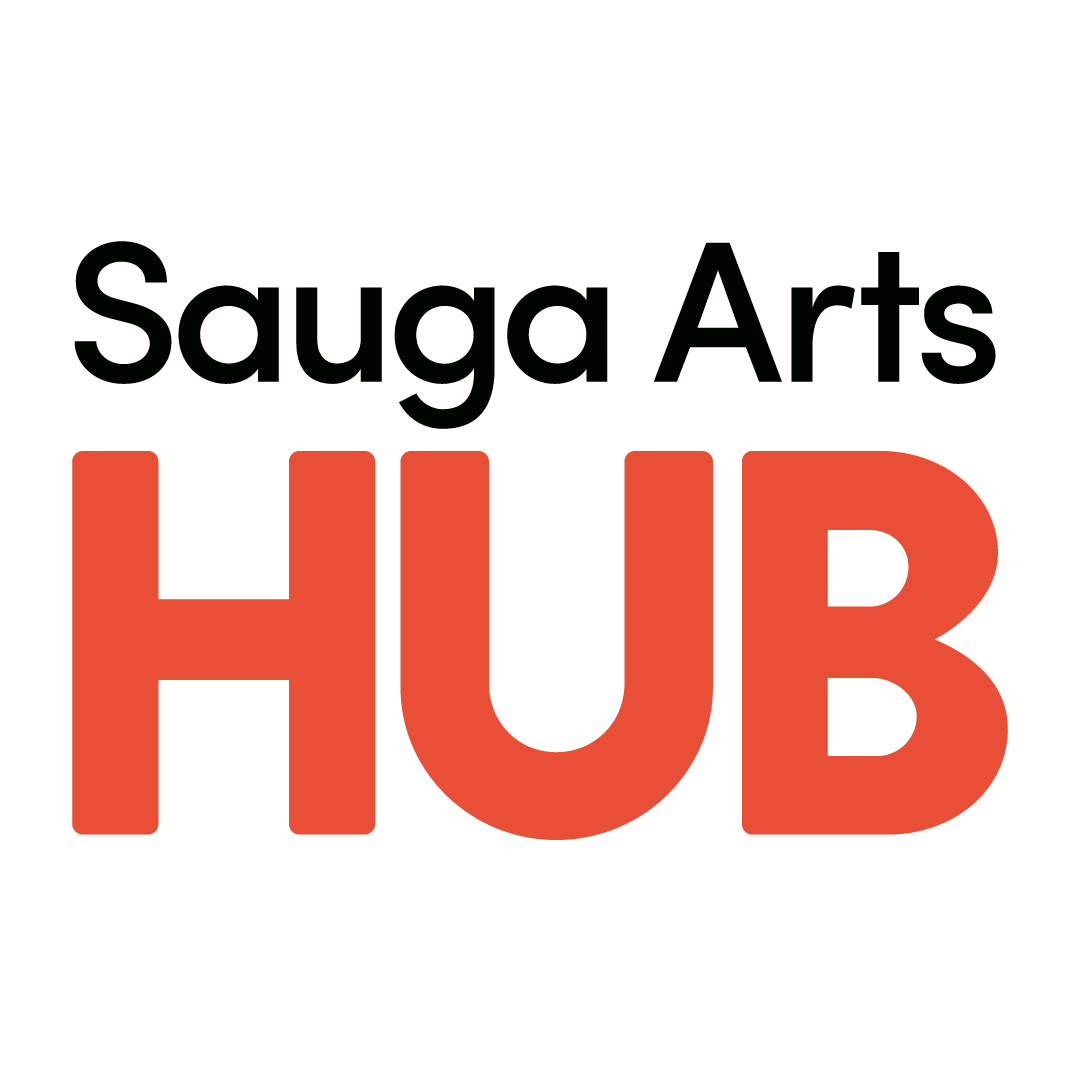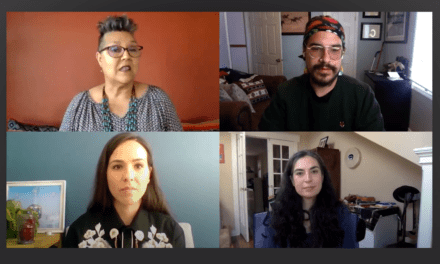CBC Ontario partners with artists to showcase richness of talent, diversity and culture

June is National Indigenous History Month, and CBC Ontario has partnered with seven Indigenous artists to showcase the richness of talent, diversity and culture across the province.
Through illustration, each artist depicts their interpretation of community, National Indigenous History Month (NIHM) and National Indigenous Peoples Day (NIPD).
Note: Responses have been edited for length and clarity.
Jacenia Desmoulin, Biigtigong Nishnaabeg First Nation, Anishnaabe artist, graphic designer

Please share the inspiration behind your design.
I chose these characters because they are well-known and recognized teachings. They meld and continue into each other: Turtle Island, seventh fire prophecy, seven grandfather teachings and seven generations.
What does this design represent?
We are one people, and the reserves we come from are not our history. It’s representative of all Anishnaabe people, these are Anishinaabe stories. These stories and teachings teach us about the lessons we need to follow to ensure the health and prosperity of many generations to come.
What does NIPD/NIHM mean to you?
To me, National Indigenous Peoples Day and History Month is a celebration of our resiliency and strength. Hopefully, one day our history will be taught in history classes, and our authors read and explored in English classes. I’d like to see all of our knowledge taught, learned and acknowledged every day in all education and professional settings.
Patrick Hunter, Red Lake, two-spirited Ojibway landscape painter, graphic designer, entrepreneur

My people will sleep for one hundred years, but when they awake, it will be the artists who give them their spirit back.– Louis Riel, July 4, 1885
How does this design represent your interpretation of community?
Seven communities surround Red Lake in the district that are illustrated by the trees above the water that the communities sit beside. Back home, we are surrounded by lakes and trees and rocks. There’s really not much else to look at, but everyone who lives there thinks it’s one of the most beautiful places on Earth.
Why is this design meaningful to you?
June also happens to be Pride month in Red Lake, which my community recently started to celebrate. As a member of the LGBTQ2S community, I wanted to represent that fact with a rainbow behind the trees, because it not only represents Red Lake being proud of its LGBTQ2S citizens, but also pride in where we come from.
What style of art are you drawn to?
The style of artwork that I do is called Woodland Art, but I also fancy myself a landscape painter as well. To view Woodland Art, you need to pretend you have X-ray goggles, and you can see the spirit of what it is you’re looking at.
Naomi Peters, Caldwell First Nation, Leamington, Potawatomi and Chippewa artist-author

What does NIHM/NIPD mean to you?
To me, National Indigenous Peoples Day is a day of visibility for our people, where there is more opportunity for people to learn more about North American culture. Personally, it’s a day I feel blessed with who I am and where our people are going. I hope it’s a day for anyone Indigenous to practise reflecting on the past and learning to love their identity as Indigenous.
Please explain the meaning behind your design.
I’m a Potawatomi and Chippewa person; my grandfather was Potawatomi and my grandmother Chippewa. Because of this, I have stylized clothing in my piece to be representative of the Ojibway people. The concept represents three separate generations, with the older generations fading away in the background, as the younger generation becomes front and centre.
Why is this design meaningful to you?
With the various Indigenous facial features in my designs, I wanted specifically to portray Indigenous people as they could be represented today. As important as our history is to us, we like everyone else, are moving forward in time and living our day-to-day life now. So, while we respect our culture and carry it forward, we’re not people of the past and can’t be represented with historical images alone.
Ziibiikwans, Walpole Island First Nations, Bkejwanong unceded territory, Ojibway interdisciplinary artist specializing in digital illustration

What inspired you to create this design?
The inspiration behind this piece stems from my favourite memories of being on Walpole Island. Growing up, I spent a lot of time at ‘The Rocks’ on Walpole Island, with friends jumping off the breakwall, spearfishing with my dad, eating pizza with my cousins and searching for the sandbar with my brother. I chose to use very saturated colours to demonstrate the playful and active energy that the environment and people have when they spend time here.
Why is this area so meaningful to you?
It represents the positive, loving and interconnected community of Walpole Island. Everyone at one point or another spent time here, and it has become a central and special landmark for our community. ‘The Rocks’ represents my community because Walpole Island is deeply connected to the water that surrounds it.
What does Bkejwanong mean, and why is that significant?
Bkejwanong means: Where the waters divide. The stacked rocks and linear formation parting the water represents the island that we share our lives on. The relationship between the earth and the water gives us the foundation to live well on Walpole, and I think my community prioritizes the importance of honouring that relationship.
Mikaila Stevens, Eskasoni Mi’Kmaw Nation, Cape Breton, London, Ont.-based Mi’kmaq beader, screen printer, designer

How does this artwork represent your own journey?
My family is from Eskasoni, N.S., I grew up in Kamloops, B.C., around the Shuswap community, and now live in London working in the Anishinaabe community as a youth mentor. At a time in my life, I was ashamed of who I was. I felt unwelcome on this land because it had never felt like it belonged to my feet. It took a lot of time, and still has, to open myself up to learning and embracing my Mi’kmaq heritage. One of the first steps was learning about generational trauma, how that has affected my family in many different ways, and how I had to let go of feeling unwelcome in a culture where the door was always open for me.
What does NIPD/NIHM mean to you?
To me, it means taking time to reflect on our culture and our communities around us. It means existing as Indigenous people in a modern landscape as we continue our learning with every passing year. So much of what we do today is using teachings and connections from our past to make the most of our future. As the earth moves around us, we have a responsibility to take care of it and take care of each other along the way.
How are these teachings and connections reflected in your design?
By incorporating the intention of the sun rising and the moon setting in a cyclical way, it reminds us that as the world turns, we walk on the earth that our ancestors walked before us, and that generations will come after us. I use a lot of colours in my artwork that aren’t always considered earth tones, but you can see them in the vibrant blues of water glistening in the sun, or wildflowers deep in the woods. Vibrancy is all around us, especially in nature, and I love being able to showcase those aspects together!
Brent Beauchamp, Six Nations the Grand River, Onondaga and Anishinaabe graphic designer-animation student

What’s the inspiration behind your design?
The colours of the characters’ regalia is representative of the culture (colourful with beautiful patterns). I put the two women in the middle, radiating laughter and happiness, because Six Nations is a matrilineal community with women and Clan Mothers as our leaders. The characters around represent strength and cultural resilience. Lacrosse is known as The Creators Game and is an integral part of the community. The little girl and man represent the knowledge and teachings being passed down through generations.
How does this illustration reflect your community’s teachings?
We are taught to think seven generations before us, and ahead, when we go about passing down tradition and ceremony through oral teaching. Respecting mother earth is represented by the little plant, displayed near the centre of the image. The dancers on the sides are Grass Dancers and are wearing a Jingle Dress. All of these aspects are representative of my community.
What does NIPD/NIHM mean to you?
To me, it should be about family, community, and culture. These are multi-faceted, broad concepts that I think people can interpret in their own ways. That’s how I gather my own inspiration; it comes from a sense of community, family and culture.
Simon Brascoupe, Algonquin Territory, Ottawa, Kitigan Zibi Anishinabeg artist-educators

Please explain the meaning behind your design.
This artwork is titled Amik (Beaver) Creates Anishinaabe Territory. The beaver is an amazing ecosystem engineer responsible for shaping Algonquin traditional territory. Imagine the beaver damming small streams and rivers over hundreds and thousands of years, gradually shaping ponds and lakes that created the land and ecosystem we are all familiar with in Ontario and Quebec.
How does your artistic style honour your heritage?
The technique used is pochoir or stencil technique which honours the traditional Algonquin birchbark patterns used by ancient Algonquin birchbark basket makers. The birchbark patterns or cut-outs are used to create original artwork.
What does NIPD/NIHM mean to you?
National Indigenous Peoples Day and National Indigenous History Month is an opportunity to teach Canadians something they do not know about Indigenous People’s culture and history.
To celebrate National Indigenous Peoples Day on June 21, tune into We Walk Together on CBC Radio One (Windsor, London, Kitchener-Waterloo, Sudbury and Thunder Bay) between 4-6 p.m. ET.

























